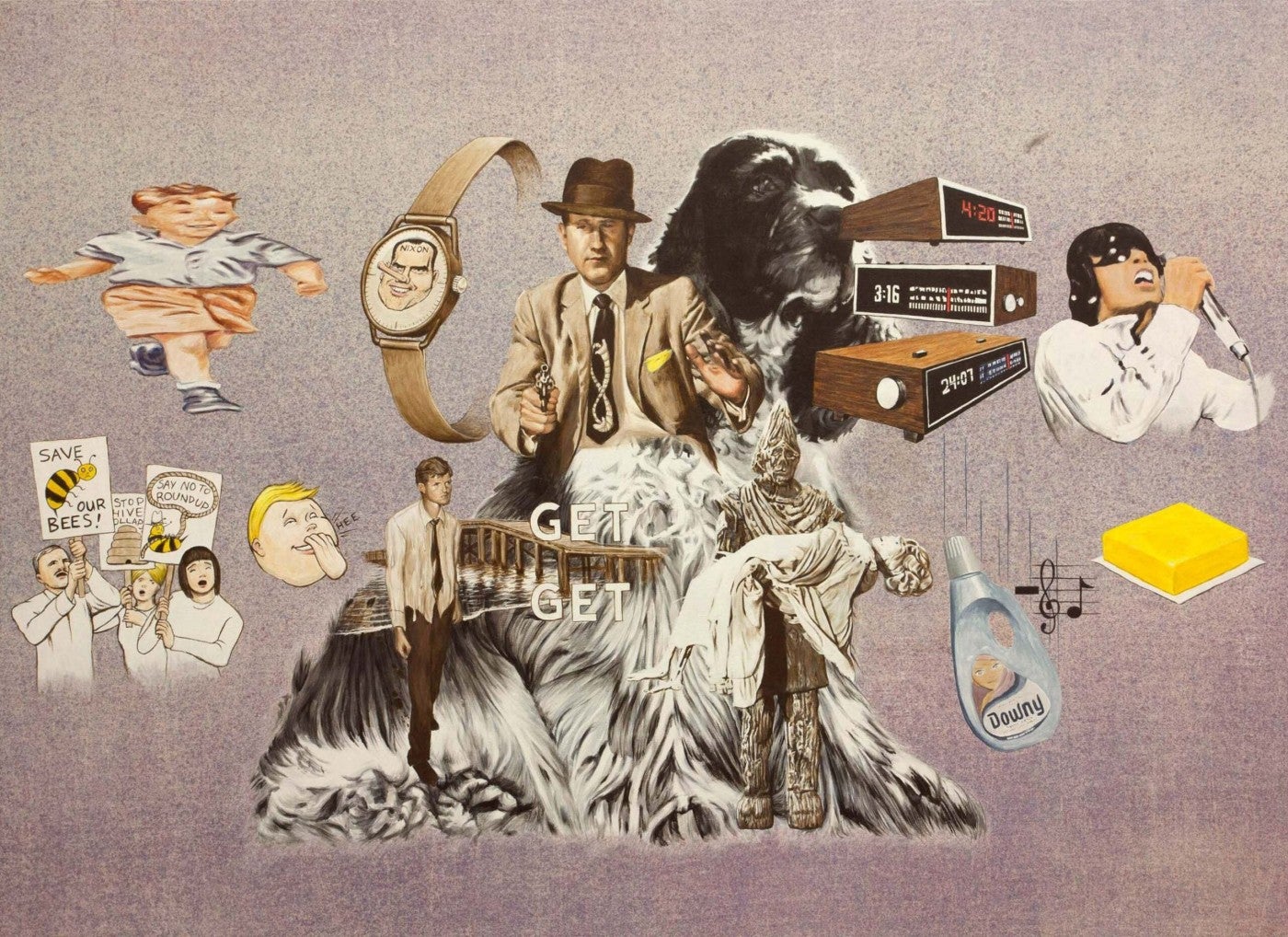STRANGE BEAUTIFUL

A solow show of Jim Shaw.
Uncle Sam, sickened by Gremlins from the Kremin. Checkers, Richard Nixon’s dog. Brett Kavanaugh, a judge accused of rape, appointed to the Supreme Court by Donald Trump. Mark Zuckerberg, one of the fastest growing magnates of the world. Jim Shaw’s recent paintings are swarming with grotesque and nefarious figures evoking contemporary American history. Yet, even if these works drip with a sharp satirical intent, we are not dealing with a form of political art such as Agitprop. Jim Shaw’s historical models are more distinctively anachronistic, closer to History painting as it was practiced at the end of the nineteenth century. History painting brought together allegorical images with discursive tools stemming from a critical rationalist tradition. An even older reference of Shaw’s is Hieronymus Bosch, whose hermetic and nightmarish visions remain today, half a millennium after their creation, the subject of many contradictory interpretations. Jim Shaw’s images are aggregates of heterogeneous sources, moments of personal histories and fragments of collective cultural history. While some works seem to be the product of hallucinations, shaped by dream logic, they remain foreign to the heritage of European Surrealism. There is no intent to unveil the inner states of the soul or psyche. Dreams are treated above all as a kind of associative machine, capable of articulating in a single pictorial space, vernacular narratives that up until then were seen as antithetical. While Shaw’s non-artistic references remain unknown to a large number of contemporary art
viewers, they nonetheless belong to a field that by definition is open to all: popular culture. In these paintings, the régime of representation predominates over History writ large. Every idea is above all an image that exists in the
world, and precedes its appropriation by the artist. Thus at the center of The Milk Separator (2019) is a 1950s domestic appliance that is meant to improve the daily chores of housewives. In the painting, the form of this object is strangely similar to that of the demonic bird in Bosch’s, The Temptation of Saint Anthony (1501). According to art historians, this animal symbolized a crooked Law figure, such as a corrupt lawyer in the service of the powerful. This household appliance, embedded with multiple cultural and political meanings, is surrounded with a dozen portraits of Brett Kavanaugh. Kavanaugh is a judge whose career has been distinguished by his radical opposition to women’s reproductive rights, and whose nomination to the U.S. Supreme Court required an unfathomable number of ethical contortions. These material deformations allude to one of Shaw’s first series, Distorted Faces (1978), but also to a formal effect easily obtained with the earliest Xerox
machines, a ubiquitous production tool of the anti-establishment visual culture of the late 1970s. As to the background of the canvas, it mimics in painted form the printer ink smears characteristic of the silkscreened paintings of Christopher Wool – an artist readily associated with the graphic counter-culture of that era. Deeply erudite but also anti-authoritarian, produced out of a masterly process of improvisation, Jim Shaw’s paintings continue to incarnate, 40 years on, a uniquely strange beauty.
Fabrice Stroun
(Translated by Charles Wolfe)